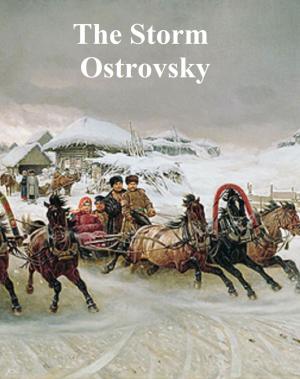| Author: | Mary Valentine Williams | ISBN: | 9780463020234 |
| Publisher: | Mary Valentine Williams | Publication: | October 13, 2018 |
| Imprint: | Smashwords Edition | Language: | English |
| Author: | Mary Valentine Williams |
| ISBN: | 9780463020234 |
| Publisher: | Mary Valentine Williams |
| Publication: | October 13, 2018 |
| Imprint: | Smashwords Edition |
| Language: | English |
Synopsis
LOSING IT gives an authentic voice to a woman alienated by her madness and by the crimes she has committed. Referencing Plath’s The Bell Jar and the stories of Jean Rhys, the book allows us to enter her internal world, and we are drawn ever more closely into a conflict between sanity and madness, life or death. As the action moves from the secure hospital where she is confined, to the deserted Belgian caravan site where she killed her children, JULIETTE and CHRISTOPH, her internal world changes as she connects with her past, and wounds open that the well-meaning psychologist can’t heal. The staff can only be with her while the story unravels, providing the only real love she has ever known. This is a story about redemption and compassion in a dangerous, uncaring and insane world.
This first person narrative tells the story of JANE imprisoned in a secure mental hospital for killing her children, and her history and treatment. Jane finds solace in meditation, in a ‘quiet room’ where she is able to contemplate her past life. Already unstable, attempted therapy opens old wounds and she absconds while on compassionate leave to her sister MICHELLE’S funeral, and returns to the scene of the murders, a caravan site by a river in Belgium, where she realises finally what she has done and connects with her past life. Her psychiatrist, DR BRUCE, abusive ex-partner FEDO, children, JULIETTE and CHRISTOPHE, fellow patients HENRY, THOMAS and ALICIA and charge nurses TREVOR, ROBBIE, ELSIE and HOWARD all feature in the work
Brought back to the hospital, she longs to die rather than face the emotional consequences of her actions and a lifetime of imprisonment. Eventually she succeeds in ending her life. This drama has hope at its core despite the ending, as the nursing staff, ELSIE, TREVOR and KEN give Jane the security and care she has never known. It also addresses the issues of madness and sanity, when being sane is to feel the impact of one’s acts of madness, so that a retreat into madness or death is the only escape.
The starting point for this work was in meetings with staff from Special Hospitals. However, this is a work of fiction, which moves between the worlds of sanity and madness, time and place.
Synopsis
LOSING IT gives an authentic voice to a woman alienated by her madness and by the crimes she has committed. Referencing Plath’s The Bell Jar and the stories of Jean Rhys, the book allows us to enter her internal world, and we are drawn ever more closely into a conflict between sanity and madness, life or death. As the action moves from the secure hospital where she is confined, to the deserted Belgian caravan site where she killed her children, JULIETTE and CHRISTOPH, her internal world changes as she connects with her past, and wounds open that the well-meaning psychologist can’t heal. The staff can only be with her while the story unravels, providing the only real love she has ever known. This is a story about redemption and compassion in a dangerous, uncaring and insane world.
This first person narrative tells the story of JANE imprisoned in a secure mental hospital for killing her children, and her history and treatment. Jane finds solace in meditation, in a ‘quiet room’ where she is able to contemplate her past life. Already unstable, attempted therapy opens old wounds and she absconds while on compassionate leave to her sister MICHELLE’S funeral, and returns to the scene of the murders, a caravan site by a river in Belgium, where she realises finally what she has done and connects with her past life. Her psychiatrist, DR BRUCE, abusive ex-partner FEDO, children, JULIETTE and CHRISTOPHE, fellow patients HENRY, THOMAS and ALICIA and charge nurses TREVOR, ROBBIE, ELSIE and HOWARD all feature in the work
Brought back to the hospital, she longs to die rather than face the emotional consequences of her actions and a lifetime of imprisonment. Eventually she succeeds in ending her life. This drama has hope at its core despite the ending, as the nursing staff, ELSIE, TREVOR and KEN give Jane the security and care she has never known. It also addresses the issues of madness and sanity, when being sane is to feel the impact of one’s acts of madness, so that a retreat into madness or death is the only escape.
The starting point for this work was in meetings with staff from Special Hospitals. However, this is a work of fiction, which moves between the worlds of sanity and madness, time and place.















